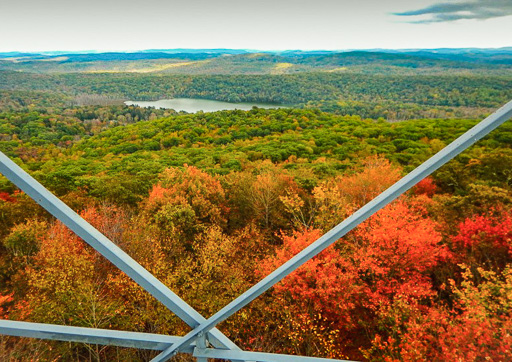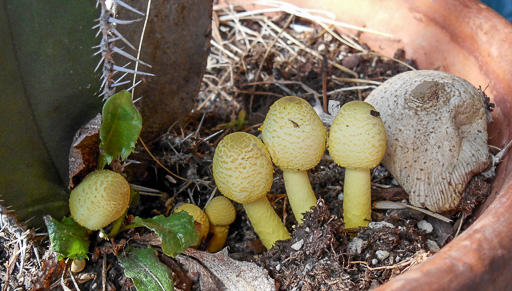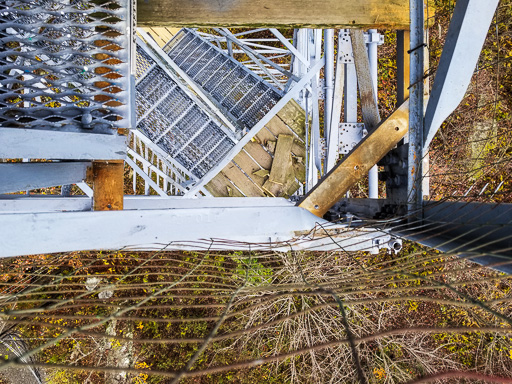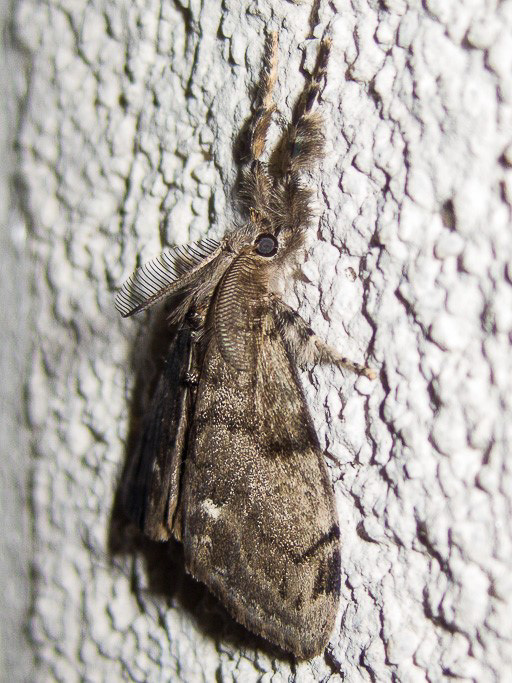“Autumn is a second spring when every leaf is a flower.”
— Albert Camus
10/1 I am observing much diminished bird and small animal populations and am curious to know if any of our neighbors have made similar observations. — Marie Merzon
10/2 I was treated to an unexpected example of Batesian mimicry this afternoon when I reached to rescue a small milk snake from my dog. To my surprise, the milk snake coiled, shook its tail like a rattler, drew back its head and struck at my hand. I stared long and hard at the spots on its back before I persuaded myself that it really was a milk snake. According to the University of Virginia Mountain Lake Biological Station, milk snakes shake their tails in leaf litter and otherwise mimic copperheads in an attempt to scare away predators. — Nelson D. Johnson, Millbrook
10/3 Sharp-shinned hawks (20) were the high count today at the Chestnut Ridge Hawkwatch, with a nice showing of American kestrels (11). Non-raptor observations included monarchs (33), still on the wing despite a cold wind. — Silvan Laan, Charlotte Catalano, Phil DuBon, Tori DuBonn
10/5 Witch-hazel blossoms have begun to unfurl adding lacey yellow to the sunlit forest.
10/6 Two long visitors arrived at our door: a walking stick and a praying mantis. — Doris Balant

We may look similar, but we go through life very differently. Photo: Doris Balant
10/9 After 29 days with less than 0.5 inches of the rain, tropical storm Nate, across two days, left us with 1.7 inches. — Tom Lake
10/10 We had three different visiting bears this summer. The first, an absolute giant whose coat glistened in the sunlight, would wander into the small clearing outside our kitchen windows and cozy down to eat sunflower seeds until no more were available. We named him, Maximus. The second bear, somewhat smaller but still bigger than most who visit, stayed around for weeks, often wandering off for a day or two but always returning to snack on the birds’ seeds and dry corn cobs set out for the squirrels. He was called, Bernardo! Little Girl arrived last. I am certain that she left her mother not more than a year or two ago, always behaved like a young lady and is now much missed. — Marie Merzon
Ed. Note: Where I live – over by Patterson near Wonder Lake State Park – the bears mostly stay in the park, only occasionally dropping by for visits. I think they’re just checking us out to see what we’re up to. I try not to do anything to attract them because I don’t want them to become so used to people that their behavior becomes a problem to someone. Too often, bad things happen to bears that hang around with people. But even so, there’s always something that they find interesting. We truly love the bears, respect their space and now wish them a warm and safe winters.
10/11 This was our best day at the Chestnut Ridge Hawkwatch since September 22. We had season highs of turkey vultures (33), osprey (14), sharp-shinned hawks (81), and Cooper’s hawks (38). Non-raptor observations included a season high count for monarchs (100+), flights of Canada geese (600), and a flock of 15 ring-necked ducks. —Silvan Laan, Charlotte Catalano, Tait Johansson
10/12 The juncos have returned. They appeared everywhere, out of nowhere: in country fields, in thick forests, and everyone’s back yards. Fresh from the trip down from their breeding grounds in Canada. The slate-colored beauties arrived just after the last of the songbirds had flitted by. They’ll stay until almost May, spending most of their year Kent. Welcome back.
10/14 Autumn began in the Great Swamp in mid-October, later than usual. The subtle colors will give way to more glamorous ones as the month progresses. The water is low and filled with plants, minnows, and duck weed. Crickets have replaced the red-winged blackbirds as the background melody. The time of expansion and growth has passed and now entropy is at work. Thoughts slow and start to turn inward in preparation for the long meditative days of winter. Soon the red maple will dazzle with scarlet brilliance, bringing back memories of red cardinals backed by snowy whiteness and cranberry garlands on deep green pines. — Diana Lee

In autumn, the world slows down. Photo: Diana Lee
10/15 We had a cloudy but mild day for the annual KCAC hike to Mt. Nimham fire tower. The sun peeked through the clouds just as the hikers climbed 90 feet higher. Brisk afternoon winds whipped from the north. It was exciting for the humans and an easy migration for the many birds, butterflies, and even dragonflies whizzing by.

When every leaf is a flower. Photo: Dod Chahroudi
10/16 A charming little yellow mushroom appeared, growing out at the base of one of our giant cacti. I searched in several mushroom books: no yellow mushrooms in North America, but Google gave me the flowerpot mushroom, Leucocopinus birnbaumii, tropical/subtropical. A nice mystery/detective story: how did one of its spores get into the cactus potting soil that’s been in the pot for many years? — Doris Balant

Spores are miraculous time capsules waiting patiently to show their power. Photo: Doris Balant
10/17 Another work day at the Mt. Nimham Fire Tower: volunteers replaced another wooden landing. Two more landings to go. From 900 feet, the town of Kent looks like its mountain tops have been painted red and gold.

Don’t tread on me. At least not until I’ve been replaced! Photo: Dave Ehnebuske
10/18 Shouldn’t the monarch butterflies have left by now? We have had a good Monarch season in the Northeast! — Anne Albright Smith
Ed. Note: I guess they were hanging around because it’s warm, there are still flowers for nectar and the wind wasn’t right all last week. There were pictures of hundreds of them hanging off the sassafras trees, just waiting the north wind to sail across the bay. The ones we see should make it all the way south, some to Mexico. Astounding.
10/19 As I went out my side door tonight to light the grill – shirtsleeve grilling in mid-October, how odd – I came across a moth enjoying the glow from my porch light. I was immediately struck by the long furry forelegs which lent it an outline different from any of the other moths I’ve seen around. The overall length is about 22-24 mm. Any idea what this is? — Dave Ehnebuske

Have you seem me? Photo: Dave Ehnebuske
10/19 With daytime temperatures in the summer-like 70s, I sat and watched the butterflies. Among the six species I counted were monarchs, cabbage whites, orange sulphurs, painted ladies, gray hairstreak, and my first of the year common buckeye. — Edward Mertz
10/23 There were three Carolina wrens on the porch, inspecting our chairs and garden tools. (I wish I had been able to photograph them!) — Doris Balant
10/24 Heavy rain after seven days of sun, left three inches in the gauge. Everything was sodden with the autumn leaves perfuming the air. The sound of the MTA moving through Patterson could be heard in Kent – a sure siqn of low pressure. It was a good day to make a pot of soup.
10/25 I was given a big giant puffball mushroom: thick slices sautéed in butter are melt-in-your-melt-like-angel-food-cake-delicious. There was enough for breakfast, lunch, and dinner.

A special treat, straight from Kent’s forests. Photo: Beth Herr
10/31 It was a mild Halloween, easy on tricksters and nature treaters as well. Is it just me or is this an abundant nut, seed, berry, fruit season?

It’s a win-win: you get a free meal, I get my seeds scattered far and wide. Photo: Beth Herr
Would it be ok to call Almanac readers’ attention to this interesting and enjoyable citizen science activity, recording bird sightings at their feeder? I’ve been doing it every winter for years. Data from all over the country is collected by Cornell Lab of Ornithology, used to track movements and numbers of birds: feederwatch.org/ — Doris Balant
In November
- See the sunlight flood the forest floor: stone walls emerge, streams etch valleys, mountain tops appear
- Find brown scrapes and rubbings of bucks, red partridge berries in the woodlands; umber bird nests and silky milkweed seeds in the meadows.
- Look to the sky for the Full Beaver Moon on November 4, and the Leonid meteor shower on November 16
- Listen for the honking of migrating geese and the last calls of the crickets
- Head to a Kent lake to see returning ruddy ducks, mergansers, and rafting waterfowl
